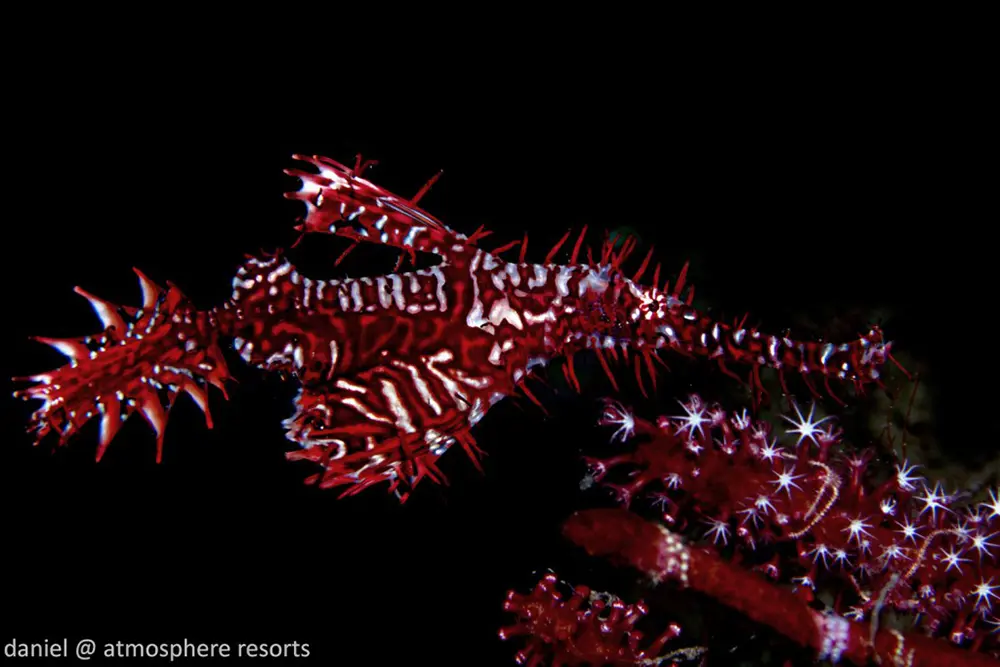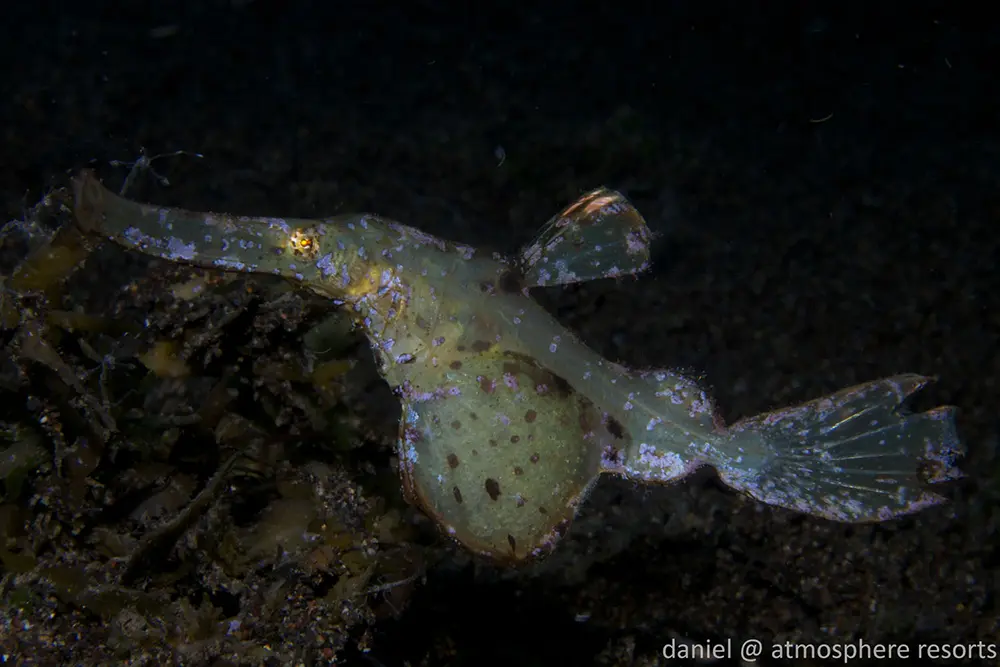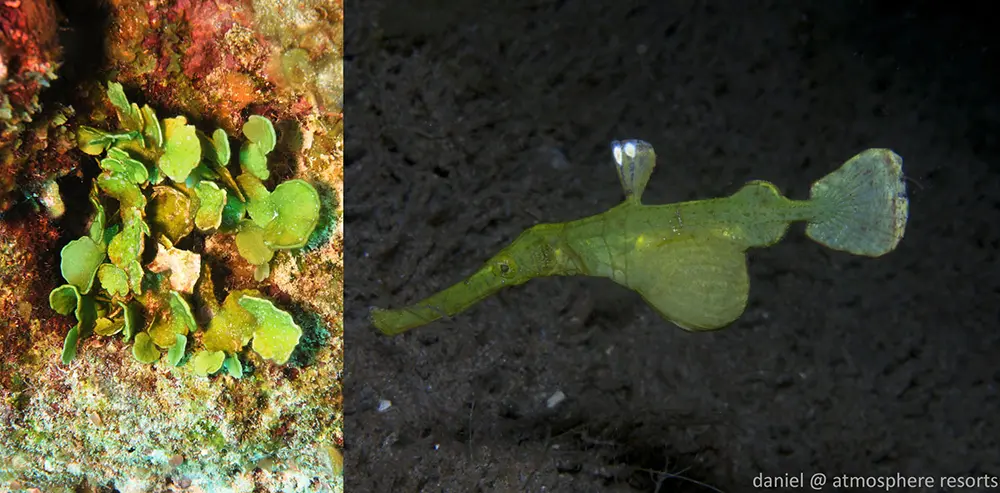Critters, critters, critters. Critters here, critters there, critters everywhere! Well, that’s how it feels here in Dauin at the moment. One critter that seems to be taking over is the ghost pipefish. At my favorite dive site Cars, we usually see between 10 and 20 per dive during the spring months and three different species. Ghost pipefish are a common request by divers here at Atmosphere, and with good reason. We have four species of ghost pipefish in Dauin, three of which we see all the time and one species that makes an appearance every now and then.

The most common Ghost Pipefish
The most common species in Dauin is the Ornate Ghost Pipefish, also called the Harlequin Ghost Pipefish. This is probably the craziest looking species. Their bodies are covered in spikes and they are usually found hiding among feather stars, matching their host almost perfectly. They come in all colors, from reds and oranges to all black or all white. They can also be found near algae, coral, sponges, pretty much anything, although they prefer crinoids.

The second most common species is the Roughsnout Ghost Pipefish. We only find them from around January until June due to the algae that starts to accumulate on the sandy slopes. The roughsnout camouflages itself as algae and is covered in wispy hair, sometimes covering the whole body. Many have ‘mustaches and beards’ which is where they get their name. They are normally brown but can be red or green as well, depending on the color of the surrounding algae.

The third most common species is the Robust Ghost Pipefish. This fish is usually found near seagrass or leaves but sometimes can be found in the algae, on sandy slopes, and also paired with an ornate or roughsnout ghost pipefish. They are usually green or brown, mimicking living sea grass (green) or dead leaves/seagrass (brown).

The last species on the list is the Halimeda Ghost Pipefish. This fish, like its name implies, mimics halimeda, an algae that can be found at numerous dive sites on the coast. They are usually green, sometimes white, and are usually next to halimeda. They have a bulkier shape than the robust because of the shape of the halimeda. This species is not very common but we had a resident on our house reef for awhile and have seen some recently.

Not only are they masters of camouflage and mimicry but their lifestyles are just as interesting. Ghost pipefish, which are also called ‘false’ pipefish, are related to ‘true’ pipefish and seahorses due to their fused jaw, a trait shared by all three groups. They are in the same order, but a different family. A crazy fact about these critters is that the males can change into females. If there is a group, the largest is usually the female with large pectoral fins for holding the eggs. If she dies or leaves, the next male in the pecking order can transition into a female. If a male joins another male, one of them will also become a female as well. They have a planktonic phase when they are born – they are transparent with gigantic tails and ride the ocean currents. When big enough, they settle on the bottom, rapidly changing color and shape to blend in with their surroundings, so yet another critter that can change color here in Dauin. They are called ghost pipefish because many refer to them as ‘ghosts’ since they randomly appear and disappear.
Next time you are out on a dive, double check those clumps of algae, crinoids, and sea grass beds. You never know what ghost pipefish you might see!
Your Marine Biologist /Daniel







